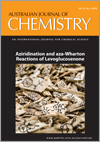
Australian Journal of Chemistry
Volume 72 Number 5 2019
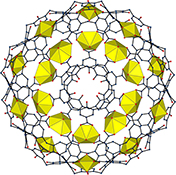
Although uses of uranium had been known to the Romans, a dramatic turn in its chemistry came with the discovery of radioactivity and ultimately what that signified. Outside the nuclear area, however, properties of uranium compounds such as fluorescence, unusual stereochemistry and catalysis offer numerous reasons for continuing interest.
CH18387Pd Nanoparticles Incorporated Within a Zr-Based Metal–Organic Framework/Reduced Graphene Oxide Multifunctional Composite for Efficient Visible-Light-Promoted Benzyl Alcohol Oxidation
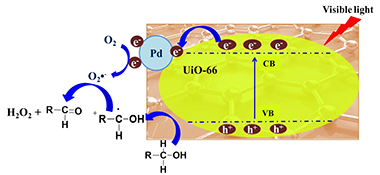
A Pd@UiO-66/rGO composite was prepared and used as an outstanding photocatalyst for the selective oxidation of benzyl alcohol under visible light irradiation. The hybrid material catalyst could be recycled and reused by simple filtration, maintaining a similar catalytic activity for five successive reactions.
CH18459Flexible N-Donor Ligands Direct the Structural Characteristics of CoII Complexes: Syntheses, Structures, and Magnetic Properties
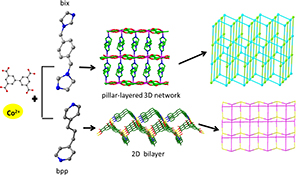
Solvothermal reactions of aromatic 3,3′,5,5′-biphenyltetracarboxylic acid and flexible N-donor ancillary ligands afford two novel coordination polymers. 3D pillar-layered 1 and bilayered 2 can be simplified as a (4,6)- and (4,4)-connected net, respectively. Their thermal stabilities and the magnetic behaviour of 1 are also discussed.
CH18542Comparative Study of Different Electrochemical Techniques for the Preparation of Supported Pt-Ru Catalysts
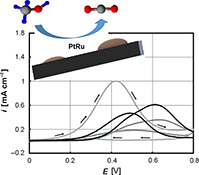
Bimetallic Pt-Ru electrocatalysts supported on glassy carbon were prepared by different electrochemical methods and evaluated as catalysts for the electrooxidation of methanol in acid medium. The electrocatalysts prepared by multiple cycles of potentiostatic pulses displayed improved methanol oxidation and tolerance to CO poisoning relative to those prepared by the other techniques.
CH18410Nanocement Produced from Borosilicate Bioactive Glass Nanoparticles Composited with Alginate
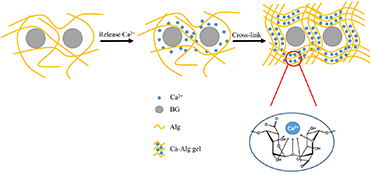
Borosilicate bioactive glass is well known due to its controllable degradation rate and good bioactivity. During the degradation process, Ca2+ ions released from the borosilicate glass can crosslink with alginate. Thus the properties of bone cement can be controlled by changing the B2O3/SiO2 ratios of the glasses.
CH18574Aziridination and aza-Wharton Reactions of Levoglucosenone

Efficient conditions for the aziridination of the biomass pyrolysis product levoglucosenone have been developed. The aziridines were transformed using an aza-Wharton reaction to give sp3-rich chiral scaffolds.
CH18450Cyano-Functionalized Diarylethene Derivatives with Aggregation-Induced Emission Enhancement and Piezofluorochromic Behaviours
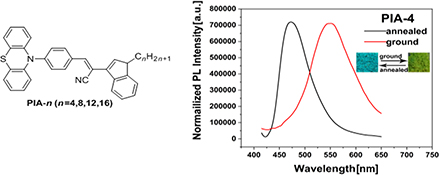
Four D-A type phenothiazine derivatives were designed and synthesized. Their structures were confirmed and the property of photophysics and piezofluorochromic (PFC) mechanism were studied. Results showed that all of them exhibited highly twisted conformations and red-shifted PFC behaviour. Moreover, it was found that the length of the alkyl group played a significant role on their PFC properties.
CH18616Molecularly Imprinted Polymer Based Chemiluminescence Method for Detection of Nitrofurans
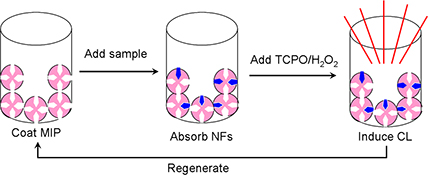
The simplest way to monitor the abuse of nitrofurans is to analyse animal feeds. A class-specific molecularly imprinted polymer for nitrofurans is synthesised and used as a recognition reagent to prepare a chemiluminescence method for the determination of seven nitrofurans in animal feeds. The assay consists of only one sample loading step and can be reused five times.
CH18559Synthesis and Characterisation of Indium(III) Bis-Thiosemicarbazone Complexes: 18F Incorporation for PET Imaging
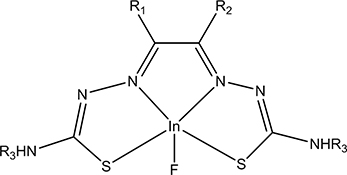
Three different indium chlorido complexes were converted into the corresponding fluorido derivative by a simple halide exchange method using K18F. These novel complexes, containing the positron emitting isotope 18F, may have potential applications in positron emission tomography (PET).
CH18381Hydration States of Cholinium Phosphate-Type Ionic Liquids as a Function of Water Content
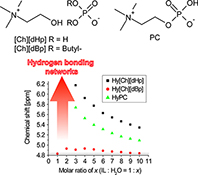
The hydrogen-bonding networks in cholinium phosphate-type ILs were influenced by both anion structure and water content.
CH18637Microwave-Assisted Synthesis, Characterisation, and DNA-Binding Properties of RuII Complexes Coordinated by Norfloxacin as Potential Tumour Inhibitors
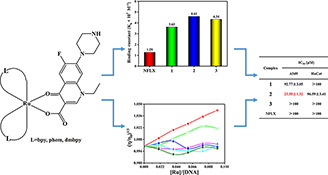
Three novel norfloxacin-based ruthenium(ii) complexes [Ru(bpy)2(NFLX)]Cl·2H2O (1), [Ru(phen)2(NFLX)]Cl·2H2O (2), and [Ru(dmbpy)2(NFLX)]Cl·2H2O (3) (bpy = 2,2′-bipyridine, phen = 1,10-phenanthroline, dmbpy = 4,4′-dimethyl-2,2′-bipyridine, and NFLX = norfloxacin) have been synthesised. Compound 2 exhibited a stronger DNA-binding affinity than 1 and 3, which is consistent with its antitumour activity, indicating that the DNA-binding behaviour can be closely related to the anti-tumour activity of the ruthenium(ii) complexes.



